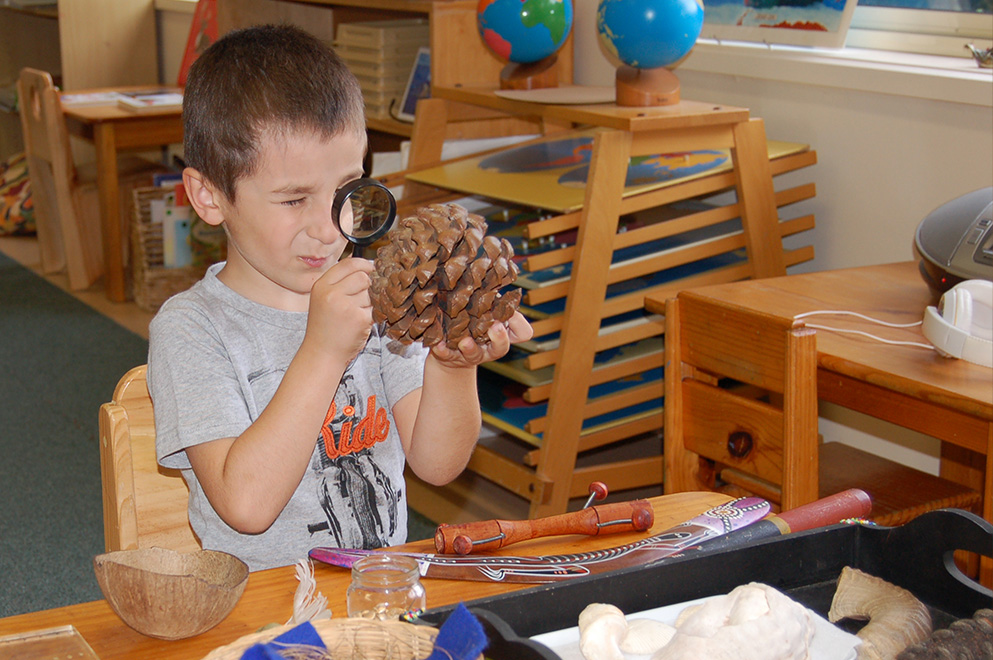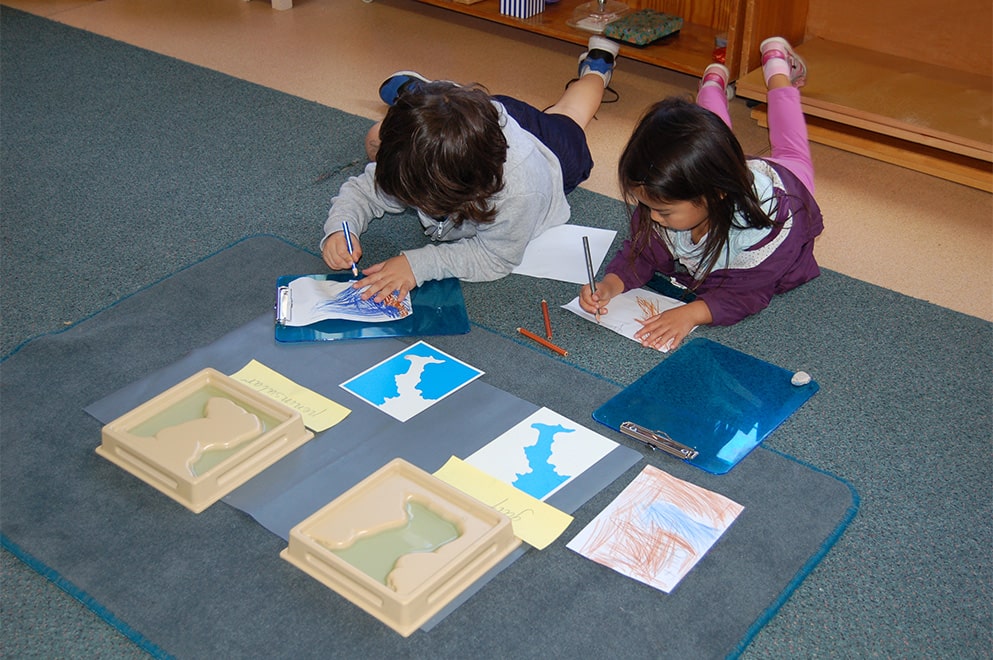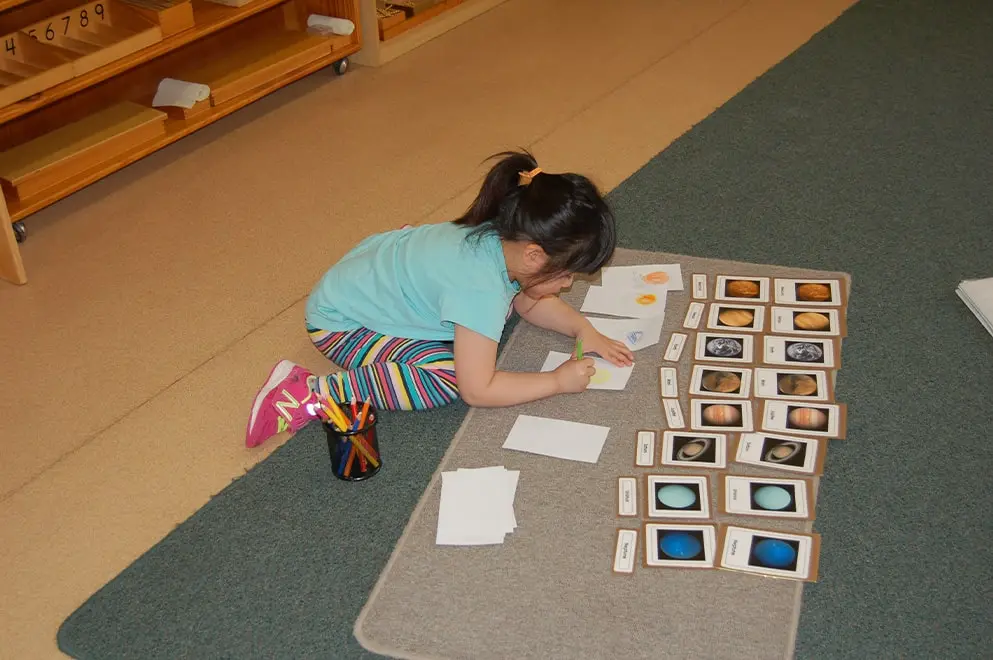
Discover the physical and biological world
Exploring and observing the natural and social world
Humanities
Montessori classrooms feature puzzle maps of the continents and the countries of the world along with their flags. These, with the continent folders, help children learn about the different continents, countries, people and places. Cultural boxes contain items such as clothing, musical instruments, and artifacts, allowing children to explore different cultures and traditions.
Children explore various land and water forms such as islands, lakes, peninsulas, bays, etc. through hands-on materials. They learn to identify and understand the characteristics of these geographical features.
Educators share stories from history, often focusing on famous inventors, scientists, artists, and historical events, to inspire a sense of wonder and interest in the past.
Aboriginal and Torres Strait Islander peoples’ history, culture and contributions are recognised in our programs through activities such as reading stories, using symbols in art, listening to music and singing songs, learning new vocabulary and practising Acknowledgement to Country.


Science
Science materials and activities in a Montessori environment expose children to interesting aspects of the biological and physical world. The children have the opportunity for hands-on learning and self-discovery about topics including:
Plants – children take nature walks in our garden, observing and collecting plants, leaves and flowers. They plant seeds, water plants and watch them grow, harvest vegetables and use them for food preparation. Children learn about the shapes of different leaves as well as parts of plants, trees and leaves using specific Montessori materials.
Animals – children learn about the needs, habitats and characteristics of different animals, birds and insects. They explore the life cycles of animals and insects through activities such a reading books, classified cards, puzzles,
observations and discussions.
Weather, Seasons – through observations and discussions, children learn about the characteristics of the different seasons and weather conditions and the changes that happen in nature. They learn the related vocabulary and use this in context of their observations.
Experiments – children learn basic science concepts through simple science experiments, such as ‘sink & float’ activity, colour mixing, ice making and melting, dissolving salt/sugar, etc.

Art & Music
Children’s self-expression is promoted through creative activities, such as drawing, painting, sculpture, drama, dance, movement, music, songs and storytelling. Through participation in these activities, children develop their confidence in self-expression and communication, which enables them to connect with others and extend their learning.


